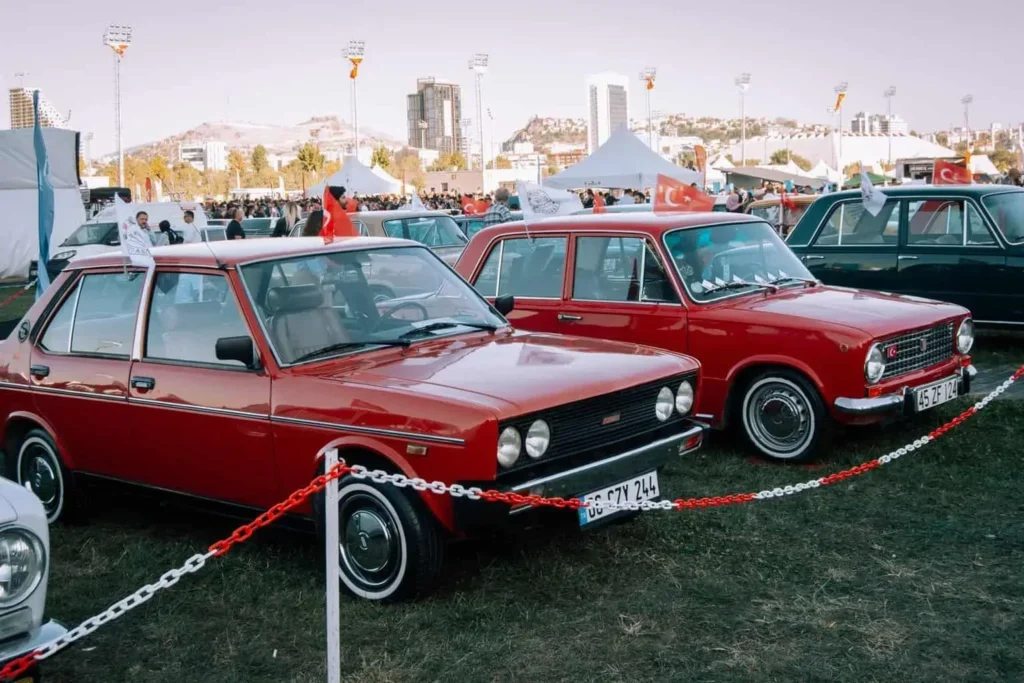So, you’re probably wondering what exactly we mean when we say something is “retro.” It’s a term that gets thrown around quite a bit, but the actual definition can vary depending on who you ask. Is it the 70s with funky colors and disco balls? Or maybe the 80s with bright neon and shoulder pads? Well, in this article, we’re going to take a closer look at what time period actually qualifies as retro and explore how this nostalgic trend has become so popular in recent years. Get ready to take a trip down memory lane as we dive into the world of retro fashion, music, and design.

This image is property of images.pexels.com.
The Concept of Retro
Definition and Meaning of Retro
Retro is a term that refers to a style or trend that imitates or pays homage to the past. It encompasses various aspects of culture, including art, design, fashion, music, and even technology. The word “retro” is derived from the Latin prefix “retro-” meaning “backwards” or “in past times.” It is often used to describe something that evokes a sense of nostalgia for a particular period in history.
Retro is not limited to a specific time period, as it can encompass different eras depending on individual preferences and cultural influences. The concept of retro is highly subjective and can vary from person to person. What one individual considers retro, another may view as contemporary. This subjective nature of retro is what makes it such a fascinating and diverse cultural phenomenon.
Cultural Significance and Appeal of Retro
Retro has a strong cultural significance and holds immense appeal for many people. It allows individuals to tap into a sense of nostalgia and relive or recreate moments from the past. Retro trends often evoke feelings of familiarity, comfort, and sentimentality, making them highly desirable in today’s fast-paced and ever-changing world.
One of the key reasons behind the appeal of retro is the desire to escape from the pressures and complexities of the present. The past is often seen as a simpler and more idyllic time, creating a sense of longing and yearning for what once was. Retro trends serve as a form of escapism, enabling individuals to temporarily transport themselves to a bygone era.
Additionally, retro carries a sense of authenticity and craftsmanship that is often lacking in modern mass-produced goods. The attention to detail and unique aesthetics of retro designs are highly valued by individuals seeking items with character and a story. Retro also provides a platform for preserving and celebrating cultural heritage, allowing future generations to connect with the past.
Retro and Time Periods
Confusion and Debate over Time Frame
Determining a specific time frame for what constitutes retro can be a source of confusion and debate. Retro trends can draw inspiration from various time periods, and what is considered retro today may not have been viewed as such in the past. The definition of retro is fluid and ever-evolving, influenced by societal and cultural changes.
Furthermore, different generations may have different perceptions of what is retro. For example, someone who grew up in the 1980s may consider trends from that decade as retro, while those who were born in the 2000s may view them as a throwback to a bygone era. The interpretation of retro tends to be subjective, shaped by personal experiences, and cultural context.
Generational Differences in Perception
Generational differences play a significant role in shaping perceptions of retro. Each generation has its own unique cultural markers and defining moments, contributing to the nostalgia associated with specific time periods. Baby boomers, for instance, may reminisce about the post-war optimism and consumerism of the 1950s, while millennials may feel nostalgic for the grunge and alternative cultures of the 1990s.
It is important to recognize that the notion of retro is not static and evolves as time goes on. As younger generations grow older, the trends and cultural touchstones of their youth will eventually become retro. This cyclical nature of retro ensures that it remains a dynamic and ever-present force in popular culture.
The 1920s – 1930s as Retro
Art Deco and the Flapper Era
The 1920s and 1930s are often associated with the Art Deco movement and the glamorous flapper era. Art Deco was characterized by its sleek geometric forms, bold colors, and luxurious materials. It represented a departure from the ornate and elaborate designs of the Victorian era, embracing a more modern and streamlined aesthetic.
The flapper era, on the other hand, sought to challenge traditional norms and embrace a more liberated and carefree lifestyle. It was an era of jazz, prohibition, and women asserting their independence. The fashion of this time featured dropped waistlines, shorter hemlines, and the iconic bobbed hairstyles. This combination of Art Deco design and flapper culture continues to captivate many through its retro appeal.
The Influence of the Roaring Twenties and Great Depression
The 1920s were a period of unprecedented economic prosperity and cultural innovation, known as the Roaring Twenties. This era of exuberance and excess left a lasting mark on popular culture. The Great Depression of the 1930s, however, brought about a drastic shift in societal attitudes. The economic downturn and hardship influenced the aesthetics and values of the time, resulting in a more conservative and practical approach to design.
These contrasting influences from the 1920s and 1930s have had a profound impact on retro trends. The glamour and excitement of the Roaring Twenties continue to inspire many, while the resilience and adaptability of the Great Depression era evoke feelings of nostalgia and a longing for simpler times.
The 1940s – 1950s as Retro
Post-war Optimism and Consumerism
The end of World War II brought about a sense of post-war optimism and the rise of consumer culture. The 1940s and 1950s saw a boom in economic prosperity, leading to increased purchasing power and a focus on material possessions. This period is often associated with the American Dream and the idealized nuclear family.
Retro trends from the 1940s and 1950s draw inspiration from this period of optimism and consumerism. Mid-century modern design, characterized by clean lines, organic shapes, and a blend of traditional and innovative materials, continues to be highly sought after. The popularity of retro diners, jukeboxes, and classic cars also reflects the enduring appeal of this era.
Mid-Century Design and Baby Boomer Nostalgia
The mid-century design aesthetic of the 1940s and 1950s holds a special place in the hearts of many baby boomers. The sleek and functional designs of this era, popularized by designers like Charles and Ray Eames, resonate with those who grew up during this time. The nostalgia associated with mid-century design has led to a resurgence of retro furniture, lighting, and home decor inspired by this influential period.
Baby boomers often seek out retro trends from their youth as a way of reconnecting with the carefree and vibrant spirit of their younger years. The popularity of vintage clothing and retro-themed events further highlights the lasting impact of the 1940s and 1950s.

This image is property of images.pexels.com.
The 1960s as Retro
Pop Art and Psychedelia
The 1960s was a decade of cultural revolution and artistic experimentation. Pop art, characterized by its bold and vibrant colors, consumerist imagery, and a focus on popular culture, emerged as a dominant artistic movement. Artists like Andy Warhol and Roy Lichtenstein challenged traditional notions of art and blurred the boundaries between high and low culture.
Psychedelia also made its mark during this time, heavily influenced by the counterculture and the use of mind-altering substances. Bright colors, intricate patterns, and distorted images represented the hallucinogenic experiences of the era. Retro trends inspired by the pop art and psychedelic movements continue to evoke the free-spirited and rebellious nature of the 1960s.
The Cultural Revolution and Flower Power
The 1960s witnessed a cultural revolution characterized by social activism, civil rights movements, and a rise in anti-establishment sentiments. The era saw widespread protests against the Vietnam War and demands for greater equality and freedom. Flower power, symbolized by the use of flowers as a peaceful protest against violence and war, became an iconic image of this era.
Retro trends from the 1960s often incorporate elements of the cultural revolution and flower power. Tie-dye clothing, peace signs, and psychedelic posters are all emblematic of the counterculture movement. The legacy of the 1960s continues to inspire and influence retro trends that celebrate the pursuit of peace, love, and social justice.
Space Age Design
The 1960s also saw a fascination with space exploration and the dawn of the Space Age. The race to the moon between the United States and the Soviet Union captured the world’s attention and influenced popular culture. Retro trends from this period often incorporate futuristic and space-inspired design elements, such as sleek metallic surfaces, streamlined shapes, and references to astronauts and rocket ships.
Space age design continues to hold a special place in retro culture, with its vision of a technologically advanced and optimistic future. The influence of the 1960s Space Age can still be seen in various aspects of contemporary design and popular culture.
The 1970s as Retro
Disco and Punk Aesthetics
The 1970s marked a significant shift in popular culture, with the rise of disco and punk music styles. Disco, characterized by its upbeat rhythms, flashy clothing, and extravagant lifestyle, became a symbol of hedonism and escapism. Disco-inspired retro trends often feature vibrant colors, sequins, and platform shoes, reflecting the carefree and glamorous nature of this era.
In contrast, punk emerged as a rebellious response to societal norms and the establishment. Punk fashion, with its torn clothing, band T-shirts, and leather jackets, represented an anti-establishment sentiment. Retro trends influenced by punk aesthetics embody a sense of rebellion and individuality, capturing the spirit of the 1970s punk movement.
Energy Crisis and Economic Downturn
The 1970s was also a time of economic challenges, particularly with the energy crisis and consecutive recessions. The scarcity of resources and economic downturn influenced the aesthetics and values of the time. Retro trends from the 1970s often reflect a more laid-back and natural approach, incorporating earthy tones, bohemian influences, and a focus on sustainable materials.
The cultural impact of the energy crisis and economic downturn can still be felt in contemporary retro trends. As sustainability and environmental consciousness become more prominent, the style and values of the 1970s are being revisited and celebrated.

This image is property of images.pexels.com.
The 1980s as Retro
New Wave and Postmodernism
The 1980s witnessed the rise of new wave music and postmodernism in art and design. New wave was characterized by its synthesizer-driven sound, quirky fashion, and a fusion of various musical genres. The retro trends influenced by new wave often feature neon colors, graphic prints, and exaggerated silhouettes, representing the vibrant and energetic spirit of this era.
Postmodernism challenged traditional notions of art and embraced irony, pastiche, and eclecticism. Retro trends inspired by postmodernism often incorporate references to iconic artists and designers of the time, such as Memphis Group and Keith Haring. The playful and eclectic nature of postmodern design continues to inspire contemporary retro trends.
Reaganomics and the ‘Me’ Decade
The 1980s was a decade marked by economic policies of deregulation and a focus on individualism, as epitomized by the Reagan administration. Reaganomics emphasized free markets and reduced government intervention, leading to increased consumerism and wealth accumulation. This era, often referred to as the “Me” decade, saw a focus on personal success and material wealth.
Retro trends from the 1980s often reflect the opulence and excesses of the time. Bold colors, oversized shoulder pads, and glamorous aesthetics are hallmarks of this retro style. The nostalgia for the 1980s reflects a yearning for the exuberance and ambition of the era.
The Rise of Digital Technology
The 1980s also marked a significant shift with the advent of digital technology. The rise of personal computers and video games revolutionized the way people lived and entertained themselves. Retro trends from this period often incorporate references to early computer systems, pixelated graphics, and 8-bit music.
The influence of 1980s digital technology can still be seen in modern retro-inspired design and fashion. The nostalgic appeal of vintage video games and the desire to reconnect with simpler technologies continue to shape retro trends in the digital age.
The 1990s as Retro
Grunge and ‘Alternative’ Cultures
The 1990s witnessed the emergence of grunge music and the rise of alternative cultures. Grunge music, with its raw and unpolished sound, became a symbol of disillusionment and angst. The fashion associated with grunge, characterized by flannel shirts, ripped jeans, and combat boots, reflected a rejection of mainstream ideals and a desire for authenticity.
The retro trends influenced by the 1990s often incorporate elements of grunge and alternative cultures. Band T-shirts, plaid shirts, and Doc Martens shoes are all iconic symbols of this era. The nostalgia for the 1990s reflects a longing for the rebellious spirit and individuality of this time.
Dot-Com Bubble and Y2K Anxiety
The 1990s also saw the rapid growth of the internet and the dot-com bubble. The rise of e-commerce and the promise of a digital revolution fueled a period of optimism and economic prosperity. However, with the impending transition to the new millennium came fears of the Y2K bug and widespread anxiety about potential technological failures.
Retro trends from the 1990s often reflect this duality, combining elements of digital futurism with a touch of nostalgia for analog technologies. The popularity of vintage tech devices and the revival of ’90s fashion trends illustrate the enduring appeal of this era.
Transition into the Digital Age
The 1990s marked a pivotal moment in history, as society transitioned into the digital age. The widespread adoption of the internet and the increasing integration of technology into everyday life had a profound impact on culture and design. Retro trends from the 1990s often evoke a sense of nostalgia for the early days of the internet, with references to dial-up modems, floppy disks, and pixelated graphics.
As digital technology continues to advance, the retro trends from the 1990s will likely evolve alongside it. The transition into the digital age represents a turning point in the retro narrative, blurring the lines between the past and the present.
The Role of Media in Retro Trends
Film and TV Revivals
Media, particularly film and television, plays a significant role in popularizing retro trends. The revival of classic movies and TV shows brings the aesthetics and cultural touchstones of the past to a new generation of viewers. Reboots and remakes capitalize on the nostalgia associated with beloved stories, updating them for a modern audience while still paying homage to the original.
The success of retro-inspired films like “La La Land” and TV shows like “Stranger Things” demonstrates the enduring appeal of past eras. These media portrayals serve as a visual and cultural reference point, influencing fashion, design, and the overall aesthetic of contemporary retro trends.
Music Sampling and Remix Culture
Music also plays a crucial role in the retro revival. DJs and music producers often sample and remix songs from the past, introducing classic melodies and beats to a new audience. This remix culture allows for a reinterpretation of retro music styles, merging them with contemporary sounds and production techniques.
The popularity of vinyl records and the resurgence of cassette tapes further illustrate the influence of music on retro trends. These physical formats evoke a sense of nostalgia for a time when music was more tangible and cherished as a cherished possession.
Fashion Revivals and Vintage Shopping
Fashion is one of the most visible and tangible aspects of retro culture. The revival of fashion trends from the past allows individuals to express their unique style while drawing inspiration from iconic eras. Vintage shopping, whether in physical stores or online platforms, provides access to clothing and accessories from various time periods.
The popularity of vintage clothing is not only driven by the desire for unique and one-of-a-kind pieces but also by a growing awareness of sustainable fashion. Shopping for retro clothing helps reduce waste and support a more ethical and environmentally conscious approach to fashion consumption.
The Future of Retro
How Today’s Trends Will Become Tomorrow’s Retro
Retro trends are cyclical, and what is considered contemporary today will eventually become retro in the future. The cultural markers and defining moments of each generation shape the nostalgia associated with specific time periods. As younger generations grow older, the trends and cultural touchstones of their youth will inevitably become retro.
Today’s trends, such as the resurgence of ’90s fashion, the revival of vinyl records, and the popularity of analog photography, foreshadow the future of retro. These trends will continue to evolve and inspire future generations, creating a cyclical cycle of nostalgia and resurgence.
The Cycle of Nostalgia and Resurgence
The cycle of nostalgia and resurgence is a testament to the enduring power of retro. As time moves forward, society embraces the past as a way to escape the complexities of the present. The desire to reconnect with familiar and comforting experiences drives the resurgence of retro trends.
Retro serves as a bridge between generations, allowing people to connect with the past and preserve cultural heritage. It offers a sense of continuity and stability in an ever-changing world. The appreciation for retro is not just a reminiscence of bygone times but an acknowledgment of the impact that history has on shaping our identities and cultural landscapes.
In conclusion, retro is a multidimensional and ever-evolving concept that encompasses various time periods and cultural influences. It holds immense cultural significance and appeals to people across generations. Retro trends allow individuals to tap into a sense of nostalgia and momentarily relive or recreate moments from the past. The subjective nature of retro ensures its enduring presence in popular culture, shaping our perceptions of the past and influencing the trends of the future.

